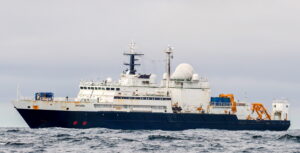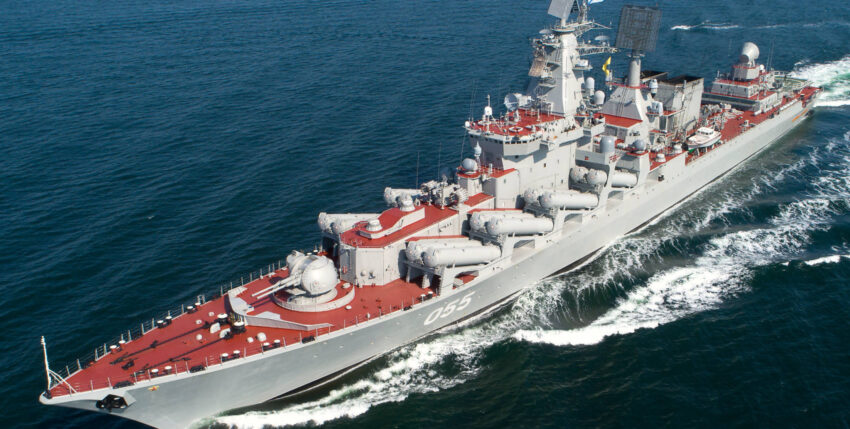Addendum from 30/01/2022: Russia has withdrawn the notification of the firing project in the Irish EEZ - the exercises are now to take place outside the Irish area of interest. For more details, see further "News" on Russian naval movements on this page.
Contribution from 27.01.2022: These days, it is probably necessary to collate all available information and create an overall picture. Here, too, it is important to separate appearance from reality as far as possible. The information provided here is therefore not quite as fresh as we had hoped, but it is backed up by at least two reliable sources. That takes time.
Baltic Sea
On Monday, around twenty units of the Baltic Fleet left their home ports to begin a series of submarine hunting and air defence exercises in tactical groups in the Baltic Sea as part of a larger manoeuvre (according to the press release). The two Steregushchiy I-class frigates "Stoiky" and "Soobrazitelny" from Baltiysk/Pillau shown in the video have probably set off on a long-range deployment - presumably these two ships will also be seen in other sea areas in the near future; however, the logistical component is still missing.
Russian naval manoeuvre in the eastern Baltic Sea
North Sea
On Wednesday, units of the Northern Fleet also set sail for the Barents Sea to conduct joint exercises with Russian Arctic troops as part of an Expeditionary Corps (landings/sea-land operations). As understandably few further details are given, it is worth letting the RT videos speak for themselves.
Departure of parts of the northern fleet
Russian firing range off Ireland?
According to media from Chile and Germany, the Russian navy is apparently planning to conduct an artillery and missile live fire off the coast of Ireland from 3 to 8 February 2022 (04:00 to 14:00 local time). The notified area is located within Ireland's 200-mile Economic Exclusion Zone (EEZ): 160 miles south-west of Mizen Head and 220 miles west of the British Lands End.
Why Ireland in particular?
Although Ireland is a member of the EU, it is not part of NATO. It also only has a very limited naval force - essentially six modern 2,000-tonne offshore patrol boats and two smaller MPA CASA CN-235s, making surveillance and escort at sea a challenge. Civilian air traffic will also be affected by the area closures - flying over the firing range should not be the first choice, especially for Russian platforms - not even at sea!

Collateral threat
Of course, it should also be mentioned that Ireland only has minimal air defence capabilities on the western side of Europe and that land-based cruise missiles from Russian naval units could only be detected very late in this area. However, the dimensions of the declared area suggest a restriction to artillery weapons and short-range missiles - possibly also with air support from its own long-range maritime reconnaissance aircraft.
What we do not see
What is really worrying, however, is that the firing range is located in a sea area where the continental shelf merges into the deeper sea and a myriad of submarine cables between Europe and the American continent lie side by side right here. The fact that the Russian reconnaissance vessel "Yantar" (Project 22010) with its towed and autonomous underwater capabilities for investigating the seabed had already spent some time north-west of Ireland in the area of the concentration of submarine cables in August last year is of course relevant.

Clear warning from British Admiral Sir Radakin
Russia's significantly increased interest in Western underwater cables is well known - so well known that the British Commander-in-Chief, Admiral Sir Anthony Radakin, felt compelled to call on Russia to keep its underwater units away from the submarine cables. Any attempt to interfere with these communication lines - a kind of underwater cyber war - would be interpreted as an act of war and responded to accordingly. Also a clear message.
Distraction or fake target
In addition, the area is diametrically opposed to the tension zone around Ukraine, thus creating an antipodal distraction scenario. The announcement without execution is also a strategic signal, as participating units are still in their home sea areas - or have already entered the Mediterranean or are about to do so. The "research vessel Yantar" is also not yet in the sea area.
Manoeuvres of the "third kind"
Russia is of course free to use this zone, but the mere claiming of the area on the outer edge of Europe far away from Russian measurement and telemetry facilities is at least extraordinary and makes it a strategic-political process! Ireland's comment: Not amused!









